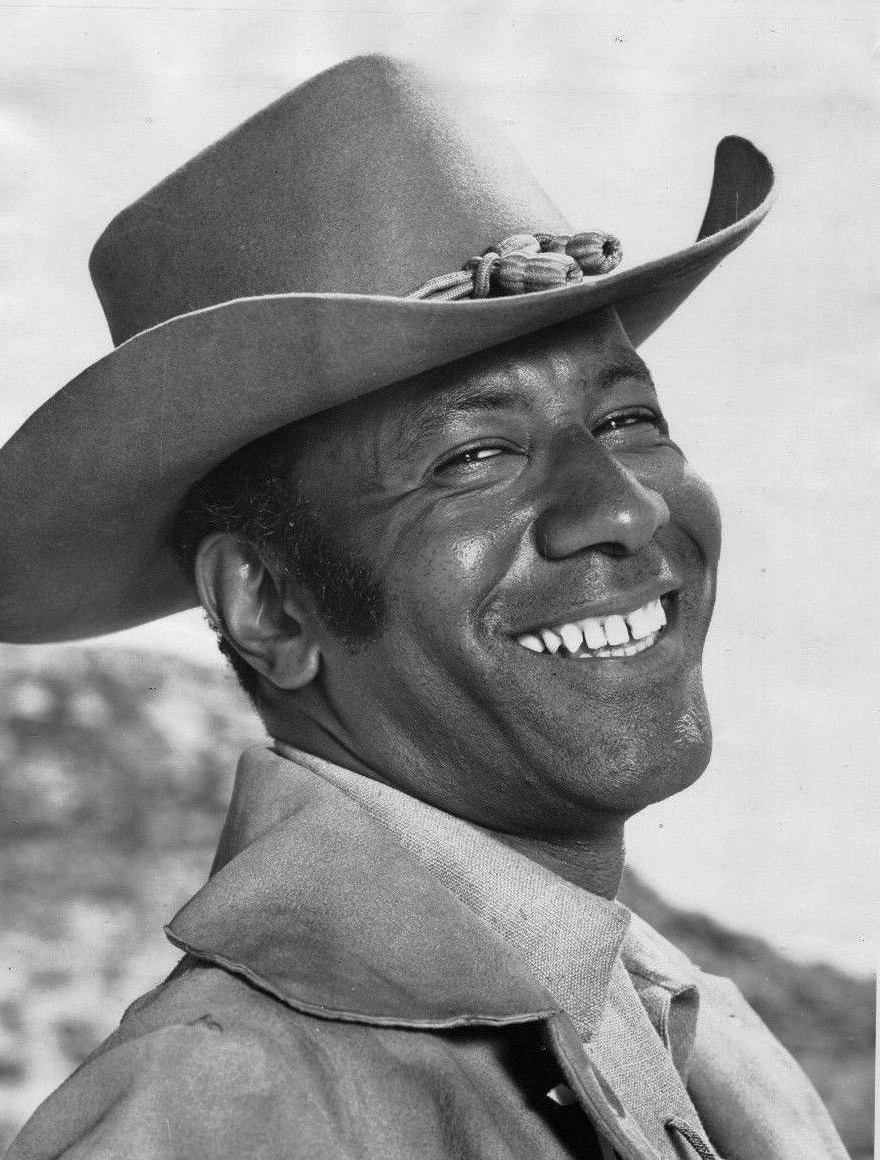
Raymond St. Jacques
Raymond St. Jacques (born James Arthur Johnson; March 1, 1930 – August 27, 1990) was an American actor, director and producer whose career spanned over thirty years on stage, film and television. St. Jacques is noted as the first African-American actor to appear in a regular role on a Western series. He portrayed Simon Blake on the eighth season of Rawhide (1965–1966).
Raymond St. Jacques
August 27, 1990 (aged 60)
Forest Lawn Memorial Park
(Los Angeles, California)
- Actor
- director
- producer
1959–1990
Rawhide (as Simon Blake)
Coffin Ed Johnson – Cotton Comes to Harlem, Come Back, Charleston Blue
Early life and education[edit]
St. Jacques was born James Arthur Johnson in Hartford, Connecticut. He had a sister, Barbara Ann. Shortly after his birth, his parents divorced; he moved with his mother and sister to New Haven, Connecticut.[1] St. Jacques' mother Vivienne later worked as a medical technician at Yale University.
After graduating from Hillhouse High School, St. Jacques attended Yale, where he studied drama and psychology.[1] Upon graduation, he worked as an assistant director, actor and fencing instructor for the American Shakespearean Festival in New Haven. St. Jacques staged all of the fencing scenes and duels while at the company. He continued to practice fencing for the rest of his life.[2]
After moving to New York City, St. Jacques continued to pursue acting and studied at the Actors Studio.[3] To support himself, he worked as a model, dishwasher, and busboy.[1]
St. Jacques's first professional acting role was in the off-Broadway play High Name Today.[2] St. Jacques was cast in the role of "Judge" in the off-Broadway performance of Jean Genet's play The Blacks at St. Mark's Playhouse in 1960.
Personal life[edit]
St. Jacques was a lifelong bachelor.[6] In August 1969, St. Jacques granted an interview to columnist Earl Wilson and told Wilson of his plans to adopt two African-American boys who were six and seven years old.[7] The adoption apparently never happened.
By the early 1970s, St. Jacques said he had two older sons, Raymond, Jr and Sterling. In a 1973 interview, St. Jacques said that Raymond, Jr was living in Boston.[2] In May 1972, Sterling, then reported to be 22 years old, made news after four men attempted to rob St. Jacques's Bel Air home while St. Jacques was in Dallas. Sterling was reported to be the only person home at the time, and fled after calling police. The four men were apprehended after their getaway car stalled in St. Jacques's driveway.[8]
Sterling appeared in St. Jacques's 1973 film Book of Numbers.[2] In the mid to late 1970s, he became known as a high fashion model. (He was briefly engaged to female model Pat Cleveland).[9] He also worked as a dancer and as a frequent figure of New York City nightclub and society life.[10]
In her 2016 memoir Walking with Muses, Cleveland said that their engagement ended because Sterling was gay. Sometime in the early 1980s, he moved to Europe where he found moderate success as an Italo disco singer. According to Cleveland's memoir, Sterling St Jacques had died of complications of AIDS in 1984. (His death has never been officially confirmed.)[11]
In a 1988 interview with the Chicago Tribune, St. Jacques still said he had two sons and that Sterling was appearing on a television show in Düsseldorf.[12]
Activism[edit]
St. Jacques frequently spoke of the prejudices he and other African-American actors faced and difficulties in getting roles as non-stereotypical, thoughtful characters. He later worked to help African Americans find work behind the camera.[4] In 1977, he publicly criticized the lack of minority actors in Star Wars (which he said he saw five times) and other science fiction films.[13][14]
St. Jacques was an activist for African-American civil rights. In 1985, he and other protestors were arrested during an anti-apartheid demonstration outside of the South African embassy in Washington, D.C.[15]
Death[edit]
On August 27, 1990, St. Jacques died of lymphoma at Cedars-Sinai Medical Center in Los Angeles, California.[5][4] His funeral was held on August 31 at The Church of the Recessional at Forest Lawn Memorial Park in Glendale, after which he was interred at Forest Lawn Memorial Park, Hollywood Hills.[16]